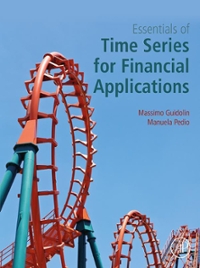Question
1. A. Explain how a person can choose freely, but his or her choices are causally determined by past events. B. Draw the causal tree
1. A. Explain how a person can choose freely, but his or her choices are causally determined by past events.
B. Draw the causal tree for Newcomb's Problem when Eve cannot perfectly detect Adam's causal history.
C. Derive the expected payoff formulas conditional on taking money from the black box only, or from both boxes. Then use them to solve for another formula that equals the smallest value of M (denoted Mmin ) required in order for Adam's average benefit from opening only the black box instead of both boxes by at least some positive multiple d of the guaranteed money L in the clear box. What is the resulting formula for Mmin. Finally, assume (L, d) = (400, 4), (r, w) = (.55, .30) and use this formula to calculate Mmin for this case.
2. A. Suppose a CD player tries to detect whether its partner is CD player instead of a DD player, by looking for external signals that are at least as typical for DD players than for CD players. Draw a diagram to explain how two boundaries bL and bH are optimally determined. Show on the diagram where it is optimal to respond C versus D. Also explain what happens to the boundaries when detection becomes more cautious by raising the minimum likelihood ratio.
B. What is the meaning of the LDD detection strategy ?
C. What is the main problem with a detection strategy of looking for "truth-telling" signals from CD players? Explain how the LDD strategy overcomes this problem.
3. A. If CD players are able to use the LDD strategy better than pure chance, then explain what happens to the signal reliability ratio as a CD player detects more cautiously.
B. Assume a population contains either CD or DD players, where each player is randomly matched with a partner taken from the whole population. Also assume the fear and greed payoff differences are equal. What are the expected payoff formulas for CD players [denoted E(CD*) ] and for DD players [ E(DD*) ] ] depending on the fraction of CD players in the population, denoted .
C. Use the expected payoff formulas of Part B to algebraically derive an inequality for the signal reliability ratio r/w that determines when the CD players will outperform the DD players.
D. Use this inequality with Part A, to explain how CD players can always outperform DD players starting from any positive initial fraction of CD players.
4. A. Use the inequality from Part 3 of Question 3 - to obtain an inequality required for * = 1 to remain stable against DD invaders when CD players take over the whole population. Also draw the ROC diagram for visually representing this stability inequality.
B. Use a diagram similar to that shown in Part A to derive a prediction of what will happen to the CD players' equilibrium probability of cooperating - if the fear and greed payoff differences decrease relative to the cooperation payoff differences.
C. Again use a diagram similar to Part A to derive a prediction of what will happen to the CD players' equilibrium probability of cooperating - if they use cell phones rather than talking face-to-face.
D. What kind of factors could further enhance or degrade the effectiveness of face-to-face communication, and if so, how would this affect the probability of cooperating ?
Step by Step Solution
There are 3 Steps involved in it
Step: 1

Get Instant Access to Expert-Tailored Solutions
See step-by-step solutions with expert insights and AI powered tools for academic success
Step: 2

Step: 3

Ace Your Homework with AI
Get the answers you need in no time with our AI-driven, step-by-step assistance
Get Started


